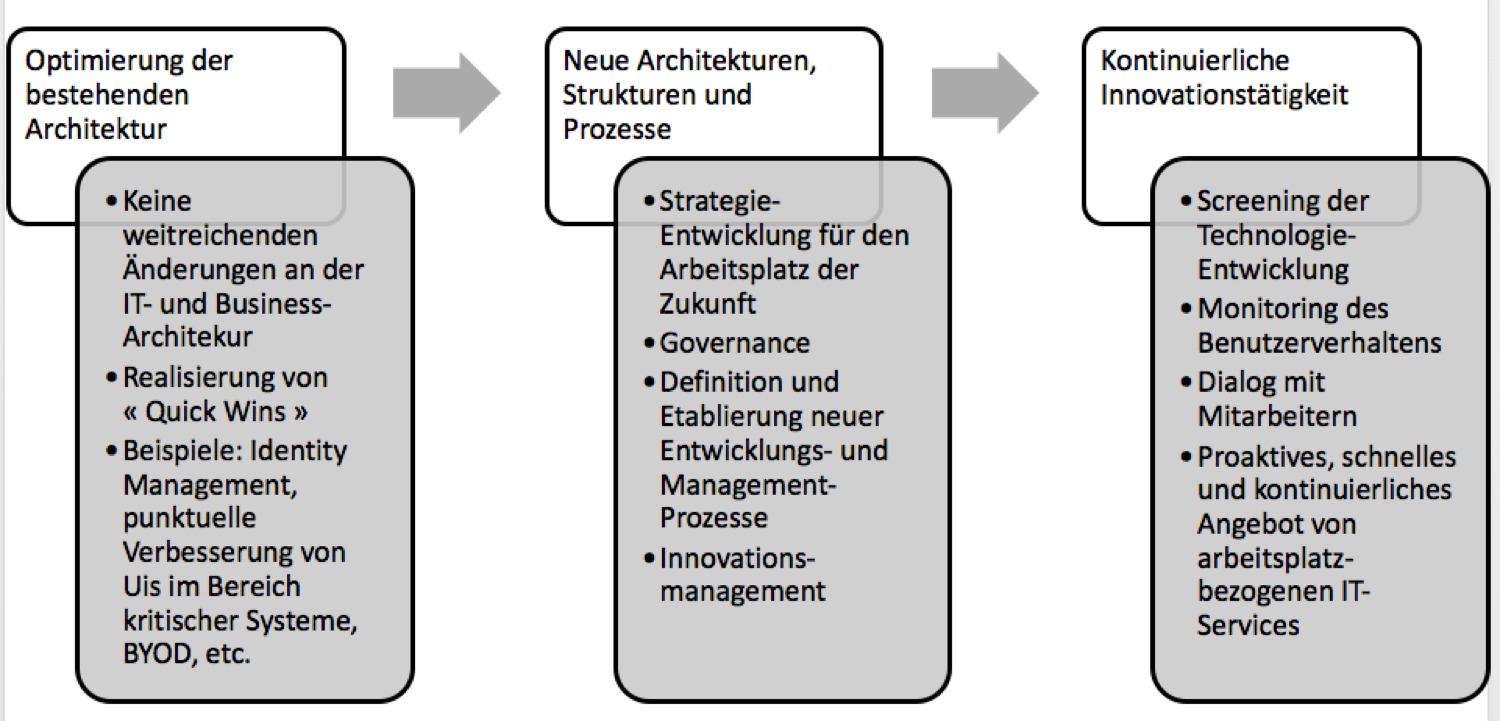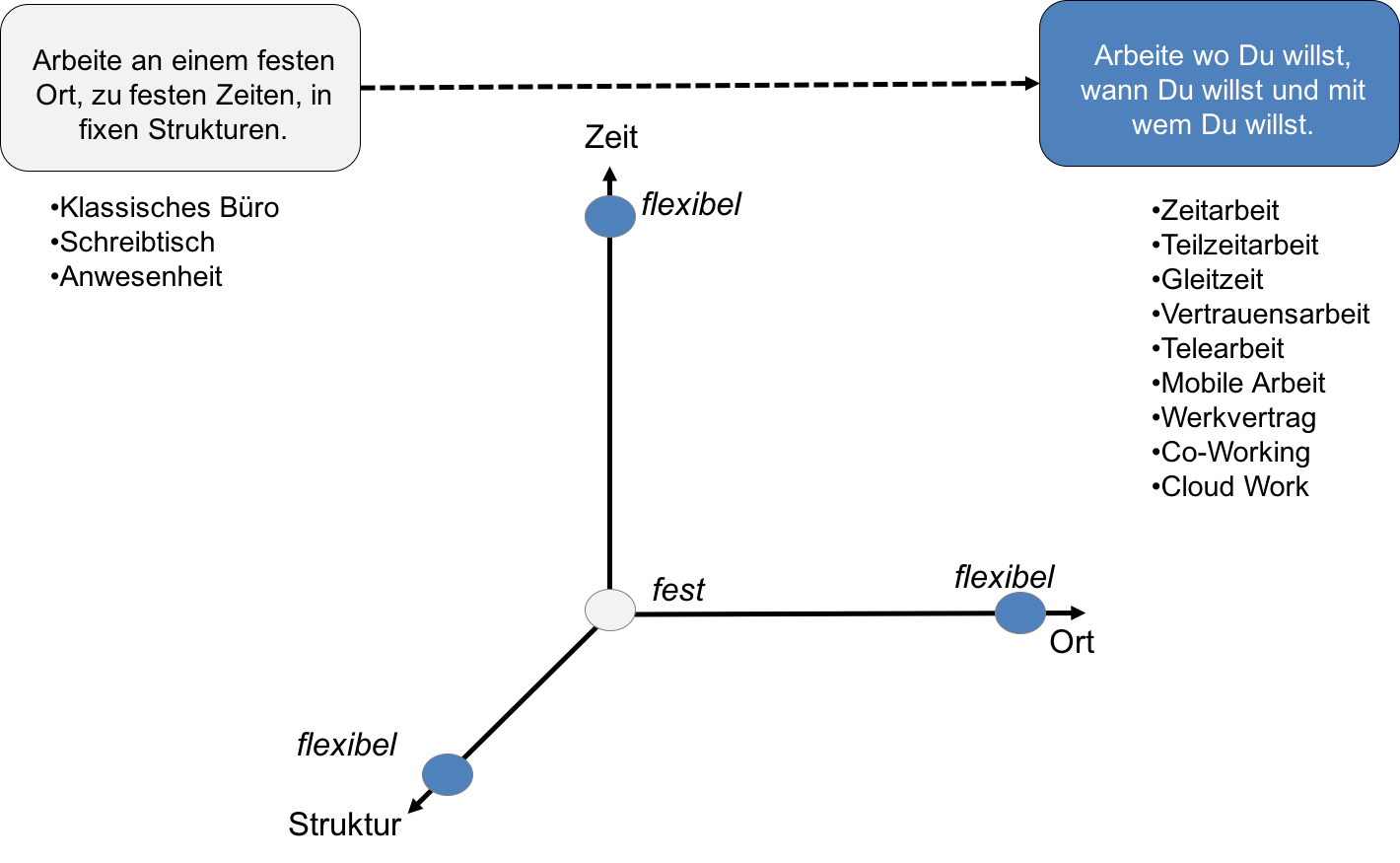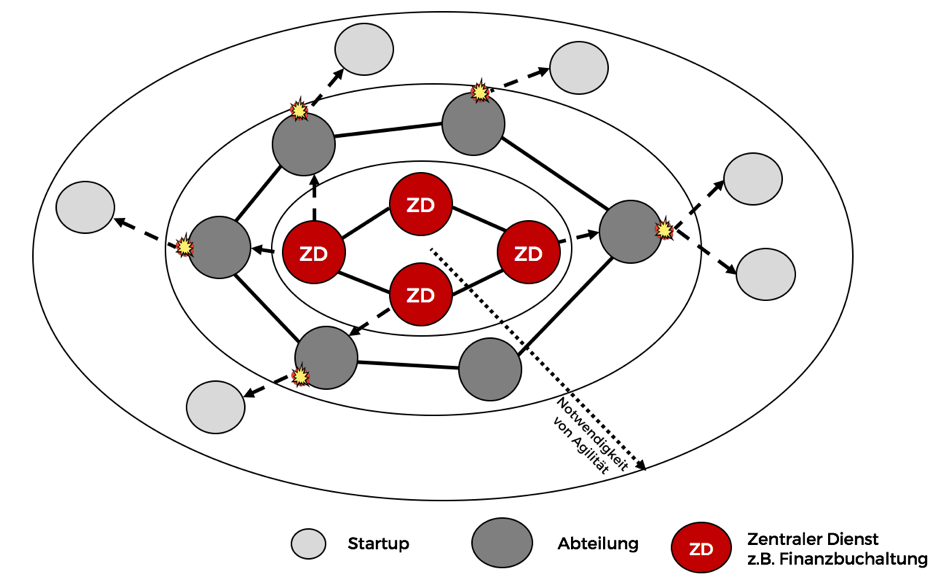Agility is on everyone’s lips and numerous companies are promoting internal digitization in order to remain attractive to specialists and customers. There is also an intense debate about the role of agility in digital change in the literature. The core issue is a chicken and egg problem: Should agility be increased first in order to digitize, or does agility increase automatically with digitization?
Debate about agility in the context of digitization
The debate about the digitization of organizations is by no means new and does not directly address agile organizations. As early as 1985, Bair examined the changes in organizations due to the so-called personal computer (PC) and called for a debate about the digitization of organizations, which, however, only had other noteworthy publications since the turn of the millennium, and since 2012 an increasing number of publications.
There are mainly two opinions on the design of this digital organization. While experts such as Arnold (2016) and Gloger (2016) believe that greater agility in companies can drive digitization, Urbach & Ahlemann (2016) and Schrauzer (2016), among others, are of the opinion that digitization paves the way for increased Is agility in organizations. However, all debates aim at increasing the agility of the company organization.
Agility as a prerequisite for digitization
Schrauzer (2016) takes up this thesis of computerization and states that a more flexible reorganization of companies is possible through more mobile hardware and software. He concludes that the digitization of companies is a trailblazer for new and more flexible company forms. Urbach and Ahlemann (2016) put this into concrete terms and show the increasing flexibility of organizations. According to these, the reorganization of the internal IT is a prerequisite. Attached is an illustration of how such a reorganization can take place.

Mobile technology and software can enable constant reorganization, free choice of seats and concepts such as home office, remote or mobile work. Distributed teams and much freer work are also possible. Which is why a higher agility in work can be determined.
Agility as a result of digitization
In contrast to the sources currently cited, Arnold (2016) states that digitization, such as the IT reorganization required by Urbach and Ahlemann (2016), can require companies to make disruptive changes. He believes that this cannot be implemented in a classic / Taylorist organization and calls for more agile structures. He describes the example of Haufe-umantis and recommends testing this with experiments and evaluating how greater agility can be achieved. Similar to Arnold (2016), Petry (2016) also sees a paradigm shift in existing organizations as a “building block for sustainable corporate management in the digital economy”. He recommends that organizations adapt to the NewWork vision: work when, how and where you want. In this way, employees should be given maximum freedom in carrying out their work. He notes that making work more flexible depends heavily on mobile hardware and software, but the necessary restructuring should be made before it is introduced, as this makes the introduction of technology easier. The following figure shows the vision of NewWork.

It turns out that the introduction and implementation of technology is complex and that appropriate framework conditions must be created in order to realize the vision of NewWork. However, according to the authors, these are the real sticking point. So these frameworks should be created first. So says the union board in the 1st round table : “ Agility also needs guidelines in order not to end up in chaos. What this means is that we ultimately need framework conditions to shape agility. “ The marketing manager also adds that self-determination of work is an important prerequisite for successful digitization. According to the marketing manager, this self-determination enables a “ creative environment[mit] Regulations and framework conditions[geschaffen werden] that enables us to have this flexibility. “ So they have Participants in the 2nd round table presented a concept to increase agility in companies.

Conclusion
Ludwig et al. (2016) took up this debate and evaluated it. The result was that the goal of the digital organization continues to be the humanization of work and should represent a humane, flexible and meaningful way of working. However, he still sees numerous open areas of tension and no or little concrete implementation scenarios for classic SMEs, which are still predominantly in a Taylorist organization and are now faced with the decision to first increase technology or agility.
Reading tips
Of course, this reasoning does not have to be right for every company and every approach is justified. Of course, my round table only represents a small and selected group of entrepreneurs in Germany. So I would be interested to know what you think? Vote in the poll! Finally, with this post, I wish you a Merry Christmas and a Happy New Year and say goodbye to your vacation until January.
[yop_poll id=”33″]
[werbung] Verwendete Quellen anzeigen
JH Bair, Personal computers and the office of the future, Telematics and Informatics, no. 2, pp. 113-117, 1985.
B. Gloger, Scrum: Developing products reliably and quickly. Munich: Hanser Verlag, 2016.
T. Ludwig, C. Kotthaus, M. Stein, H. Durt, C. Kurz, J. Wenz, and V. Wulf, “Working in medium-sized companies 4.0 – SMEs in the field of tension of digital change,” HMD – Praxis der Wirtschaftsinformatik, vol . 53, no. 1, pp. 71–86, 2016.
T. Petry, Digital Leadership: Successful Leadership in Times of the Digital Economy. Munich: Haufe Verlag, 2016.
S. Schrauzer, Computerization in Global Software Development – A Working Methodical Consideration, HMD – Praxis der Wirtschaftsinformatik, vol. 53, no. 1, pp. 42–53, 2016.
N. Urbach and F. Ahlemann, “The Knowledge Workplace of the Future: Trends, Challenges and Implications for Strategic IT Management,” HMD – Praxis der Wirtschaftsinformatik, vol. 53, no. 1, pp. 16–28, 2016.



